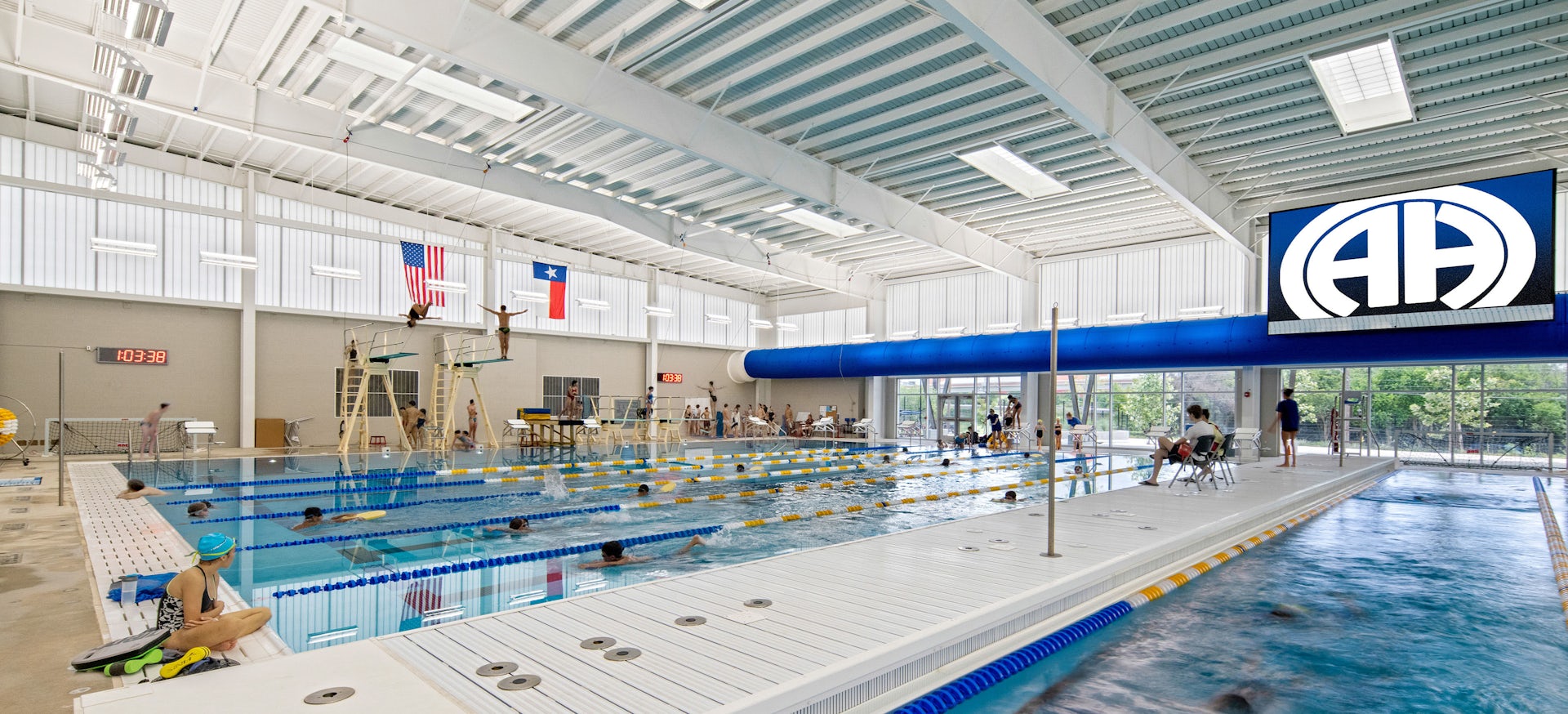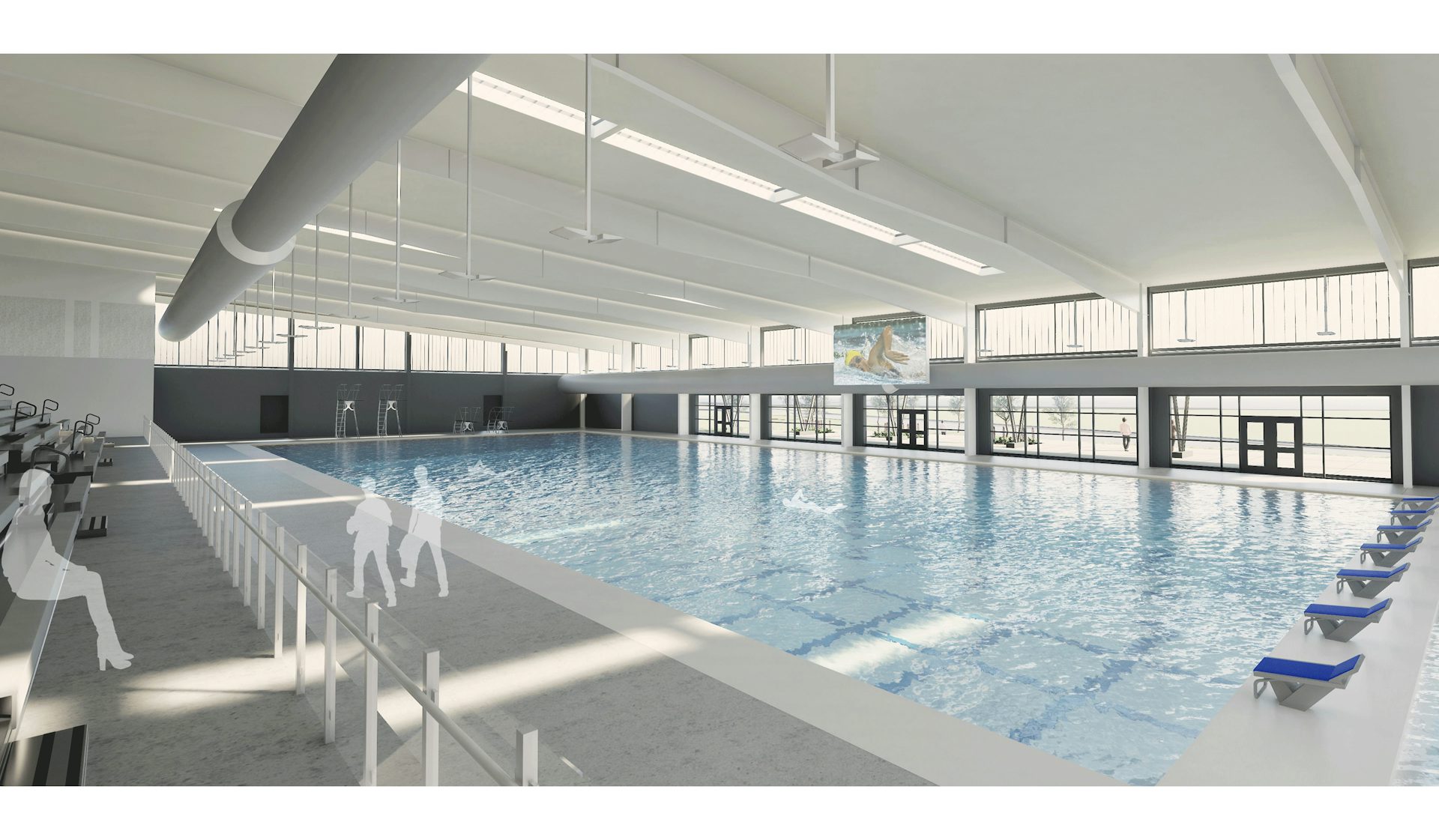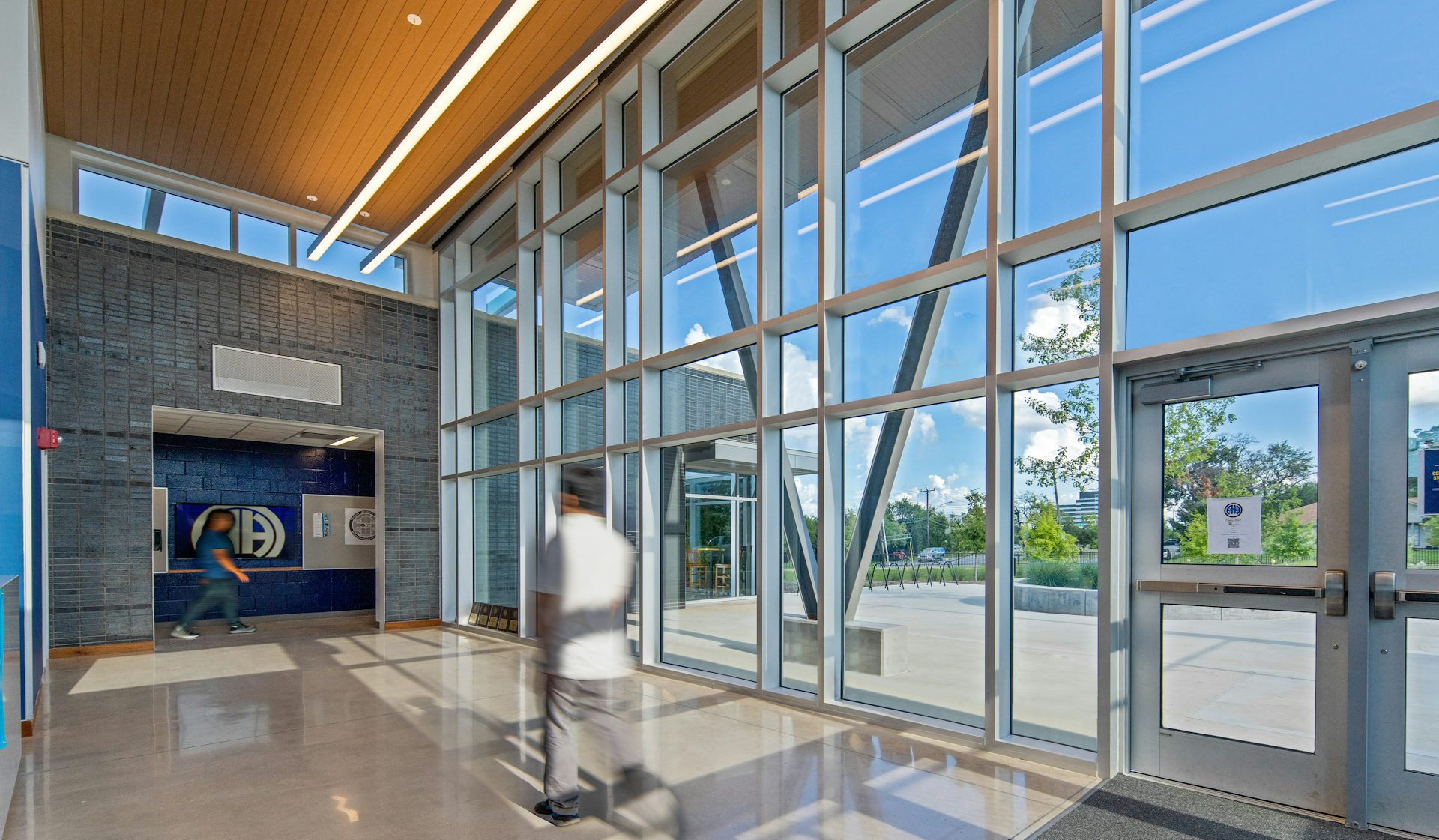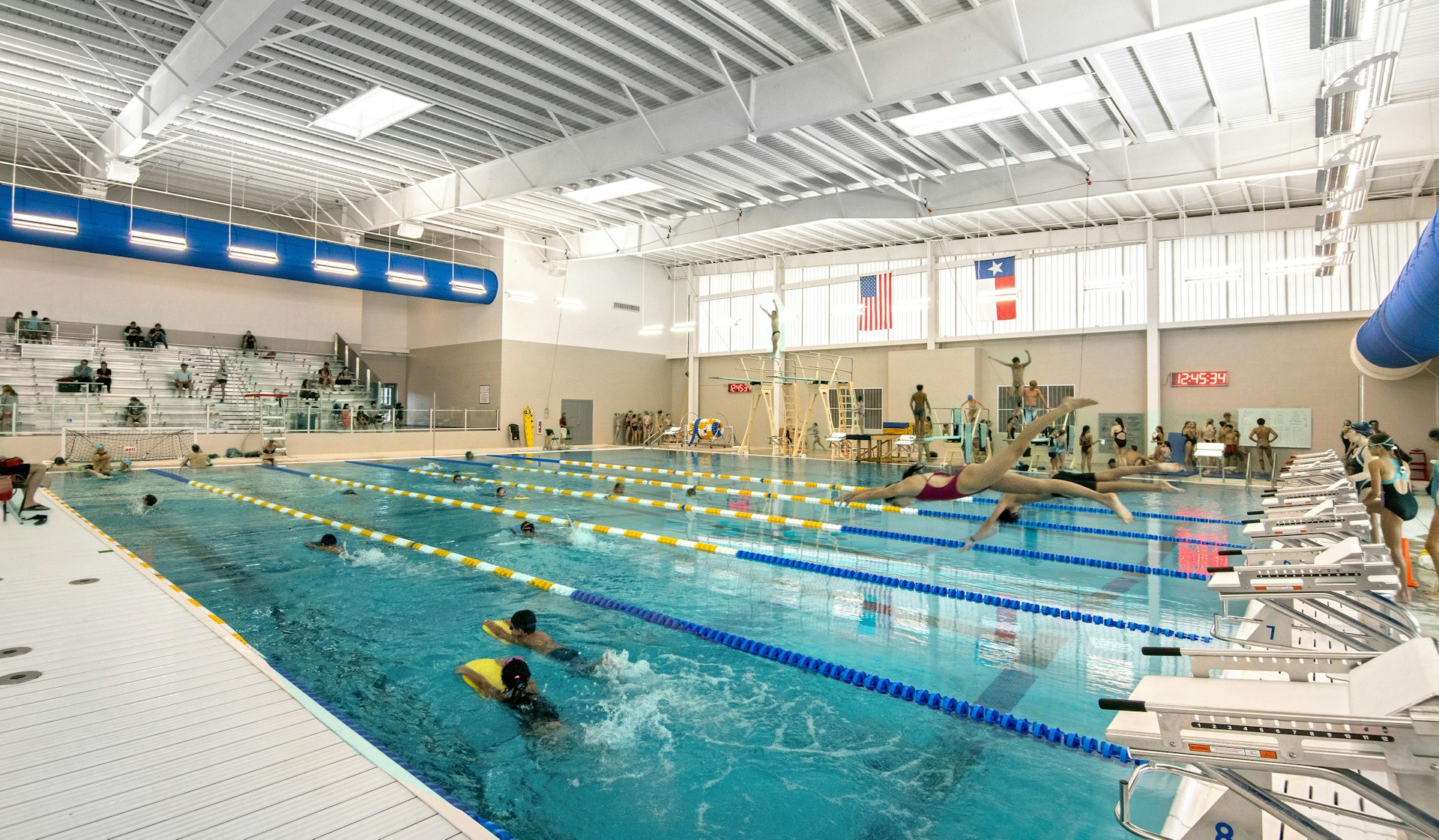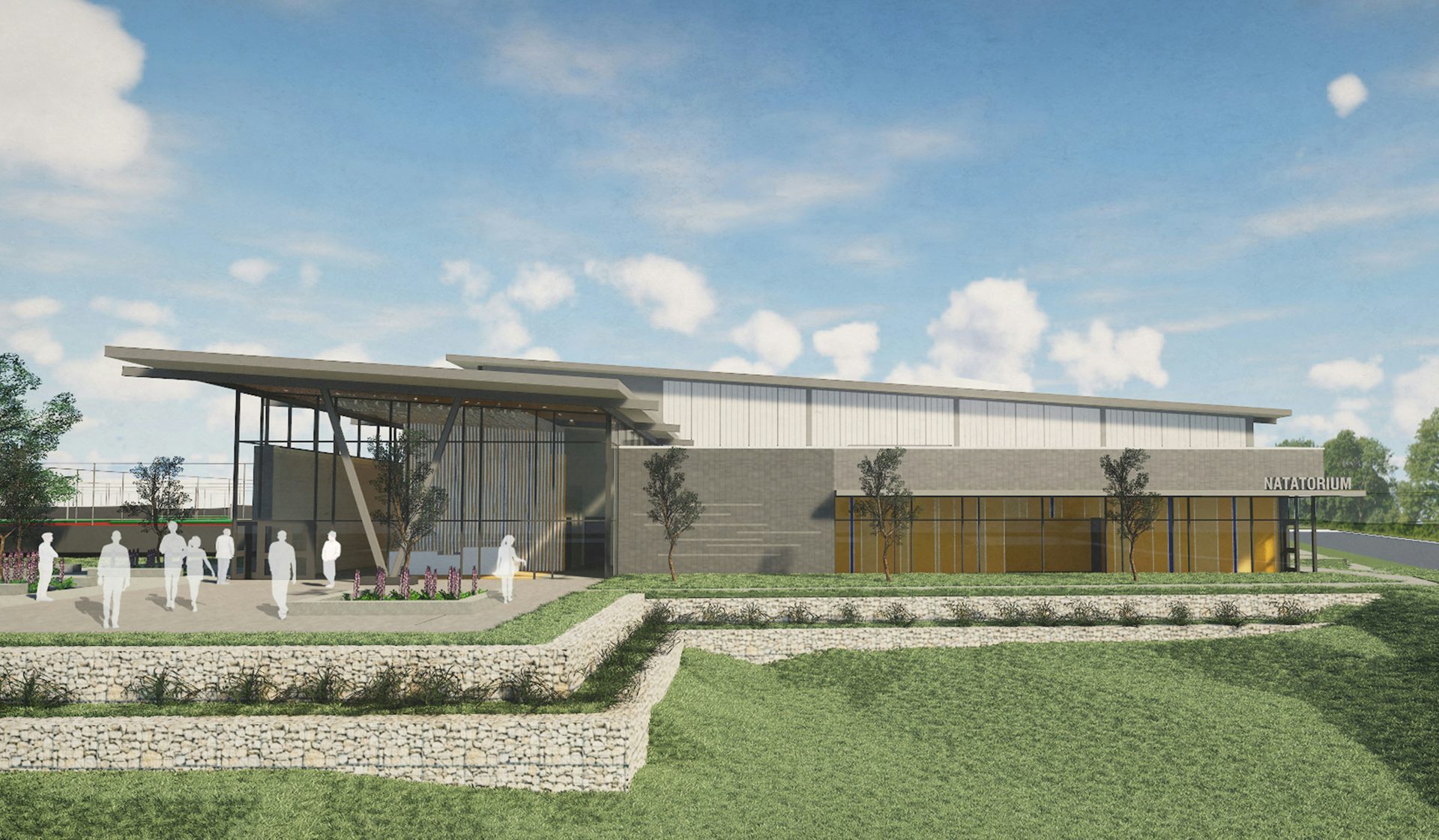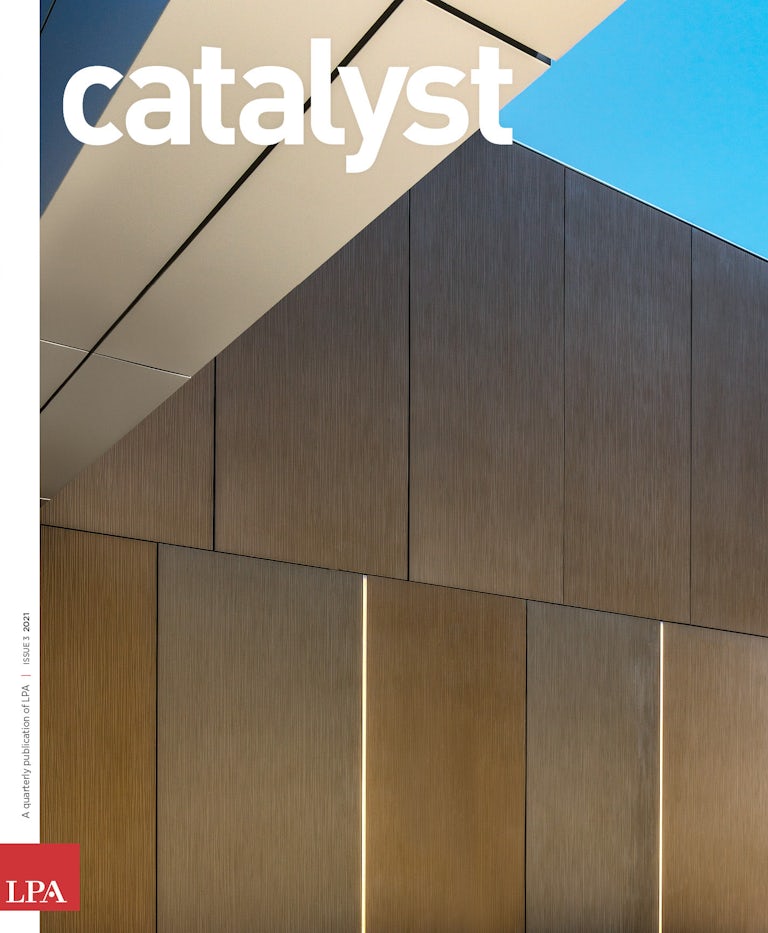The new Alamo Heights Natatorium demonstrates what is possible when community-minded planning, creative problem-solving and a comprehensive sustainability strategy come together.
The design process for the recently completed Alamo Heights Natatorium, a 26,000-square-foot aquatics center built on a satellite campus of Alamo Heights High School (AHHS in Texas, started with the exploration of a few basic questions.
“We asked ourselves: What’s an appropriate facility for the student body and its competitive needs?” says LPA San Antonio Studio Director Sara Flowers. “And how can the larger community of Alamo Heights benefit as well?”
The Alamo Heights Independent School District (AHISD), in the heart of the San Antonio region, was facing a variety of challenges, including the lack of available land for an aquatic center. The main AHHS campus already supports several athletic facilities on a constrained site surrounded by busy streets, leaving little room for the badly needed competitive pool.
“We needed to take a more focused approach with the design and programming,” says LPA Director of Sport + Recreation Arash Izadi. “The district needed a compact, flexible facility that could serve a variety of needs.”
School officials identified a site three miles from the high school’s main campus — a patch of land on the campus of Excel Academy (formerly Robbins Academy), one of the district’s satellite campuses. The site already included an outdoor competitive tennis center and, on an adjacent field, a solar farm with 228 photovoltaic panels.
The solar farm’s 2.3-acre field provided a site that was ideal in many ways. It was an underutilized piece of land with established recreation facilities, easily accessible to the community. There was also an opportunity to find synergies with other programs and the existing tennis facility, although the oblong dimensions and limited space would make it difficult to design a facility to accommodate every request.
The integrated design team, including architects, engineers, landscape architects and interior designers, focused on maximizing efficiency across the board — usage, performance and energy consumption. LPA and the AHISD already had a strong history of collaboration, dating to 2005 and including extensive architectural and interior renovations, systems upgrades and a new 60,580-square-foot science building designed by LPA for AHHS in 2018. The relationship dates to 2005 and includes collaborations on several successful bond programs. The district has a well-established commitment to community, wellness and regenerative design.
From the start, the design process included an evaluation of the school’s competitive needs and long-term goals and the broader community’s interest in ensuring that money was well spent and that the facility produced the most return from the available space.
The new natatorium features a 39-meter-by-25-yard pool with a movable bulkhead, two pairs of 1-meter and 3-meter diving boards, training tools including a trampoline and over-the-water diving belts, and seats for 400 spectators. The facility not only meets the majority of recreational and competitive needs for AHISD student athletes, but the inclusion of local groups and community-based classes will also help offset the district’s operational costs.
“A massive new center wasn’t going to be appropriate for the district,” Flowers says. “Instead, we focused on programming and evaluating how we can serve as many needs as possible in the tight space.”
Flexible programming was built into the natatorium’s design from the start. The movable bulkhead allows the pool to be set up in a variety of configurations, from a fully utilized 13-lane pool for competitive meets to a scaled-down eight lanes for swimming, plus a diving well. The flexible design eliminated the need for a second pool, while still supporting a mix of competitive, training and recreational activities.
Building performance and healthy environments were key priorities for the district. The building was organized on the site to reduce solar gain. Two water-retention ponds were added to the site to meet San Antonio city requirements for stormwater management for regenerating groundwater, and VFDs (variable-frequency drives) were installed on all pool pumps, helping to reduce operating costs and energy use by adjusting pump speeds based on pool conditions and usage rates. Heat-recovery technology was integrated into the facility’s mechanical systems, allowing the pool to be heated without the use of natural gas.
The preexisting solar array was disassembled, stored during construction and reconstructed along the northern edge of the campus to accommodate the newly developed site, utilities, emergency access lane and parking infrastructure.
“Our goal was to develop a facility that is highly efficient in terms of its environmental impact,” Flowers says. “That’s not always easy with a natatorium, but we were able to significantly reduce energy use and operating costs.”
The completed facility concisely supports programming that meets the district’s goals on a tight site. And it is already paying dividends with the school and the greater Alamo Heights community. The programs and facility are 100% booked for the foreseeable future, and, district leaders report, someone is always in the water during the hours of operation.


